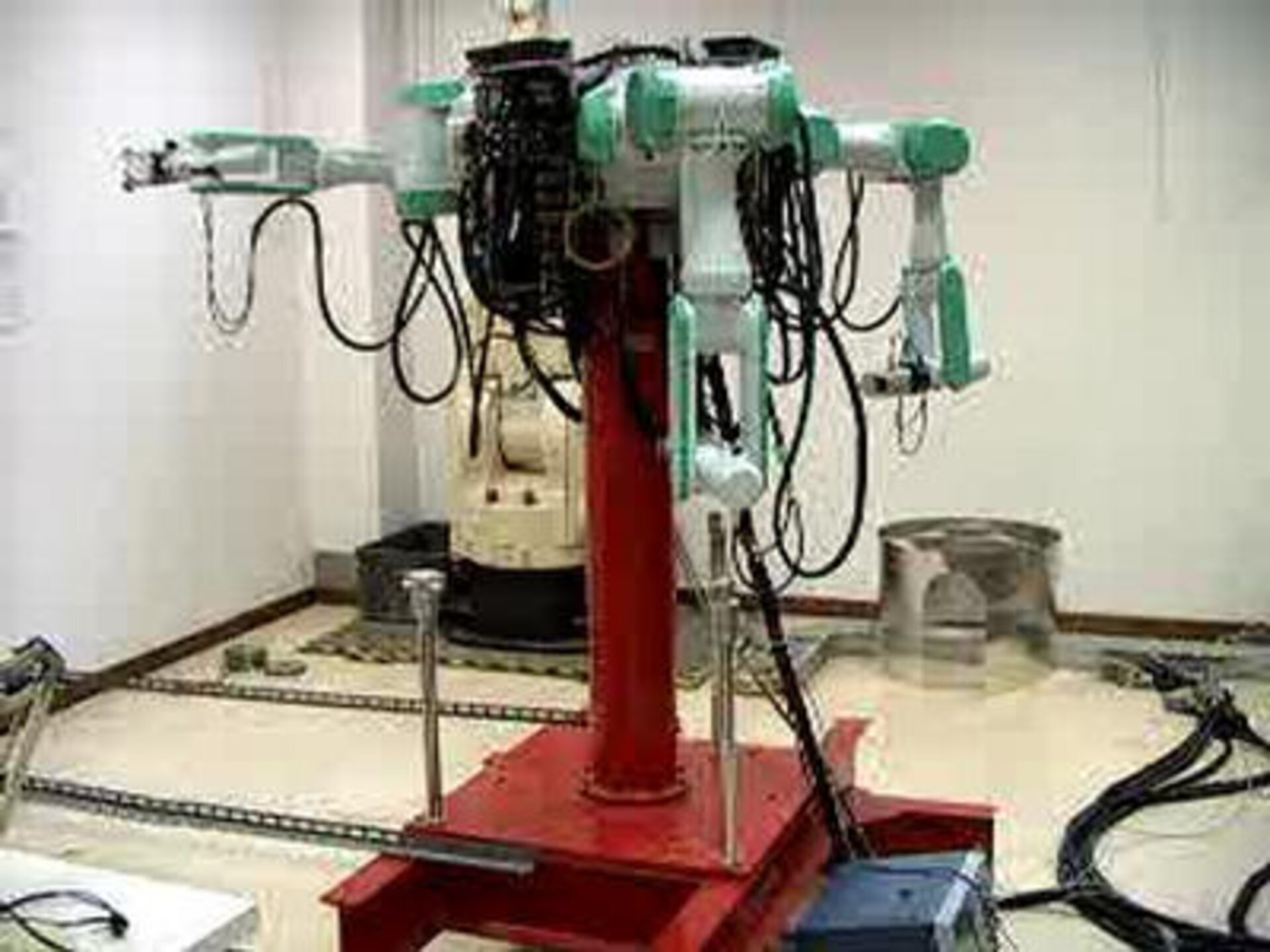CONTEXT
The International Space Station (ISS) requires Extra-Vehicular Activity (EVA) for maintenance, servicing, repair and other mission tasks.
In order to minimise astronauts’ EVA, these tasks can be performed by robotic systems such EUROBOT, the three-arms ESA system currently under study.
Purpose of the CONTEXT (Space A&R Controller Capabilities Extension) ESA Project has been to develop the controller for the ESTEC EUROBOT ground testbed.
The development activities exploited the results reached during the previous ESA projects SPARCO, CESAR and CIRCUS.
CONTEXT is able to control both in position and in force and to tele-manipulate three 7 degrees of freedom arms at the same time, in free motion, in free coordinated motion and by applying the SPARCO impedance control.
The activity has been carried out by Galileo Avionica (IT) as Prime Contractor and Trasys, Krypton (B) under ESA TRP contract.
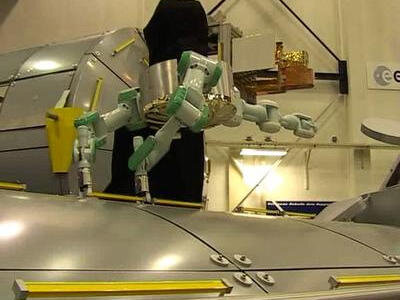
The main challenge in the CONTEXT project is to accomodate the control electronics in the central body of the EUROBOT ground demonstrator. In addition, many features like co-ordinate motion, teleoperation and collision avoidance have been developed in order to demonstrate the possible operating scenarios of EUROBOT.
CONTEXT Architecture
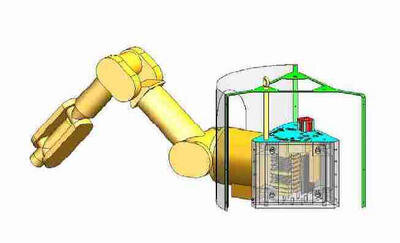
The CONTEXT hardware consists of one Robot Control Unit (RCU) based on a PC 104 plus architecture.
The RCU is interfaced via the SERCOS Bus to three Arm Control Electronics (ACEs) each dedicated to a single arm.
Each ACE consists of seven Servo Control Unit (SCU) based on a Texas Instruments DSP and is supplied by a dedicated internal Power Supply Unit (PSU). Each SCU is devoted to the control of a single arm joint.
The overall electronics and arms are powered by an Auxiliary Power Supply Unit (APSU) in charge of providing the 28V and 100V power supply lines, to manage the auxiliary I/Os as well as the safety circuitry and other external safety devices.
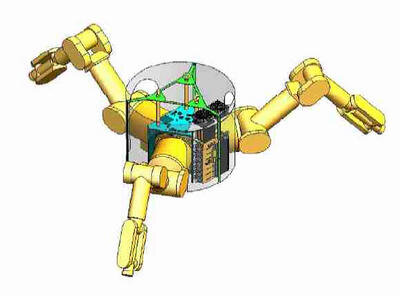
The hardware is based on the one developed in the frame of the CIRCUS project, however additional electronics has been developed to integrate additional features like, for each arm, End Effector and Force / Torque sensor.
The RCU has been designed to be located inside the mounting triangle of the EUROBOT tesbed central body; the ACEs instead are accomodated in the free space between the external cater and the central mounting triangle.
CONTEXT Software
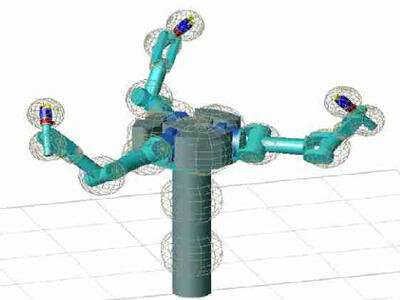
The robot control Software, already developed in the frame of the CESAR SW, has been extended to support the following new functionalities:
- Impedance Control: the impedance control has been extended to the multi-arm system
- PA-10 arm kinematics: the 7 Dof kinematics has been studied and different algorithms have been implemented. In addition, the Software has been implemented in a modular and open way to allow the user to customize the kinematic inversion
- Tele-manipulation: it is possible to tele-manipulated each of the three arms, via a TCP/IP interface: this feature is used to demonstrate the capability of tele-operate the EUROBOT arms via devices like the Exoskeleton;
- Collision Detection: the controller is able to predict, according to a geometric model of the environment, collision of each arm against either its own or other arms parts parts or the central body


